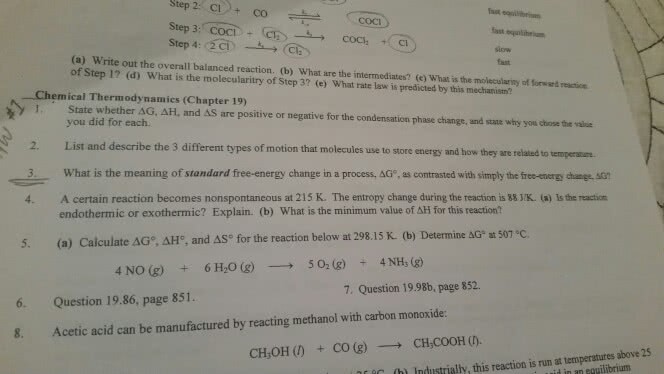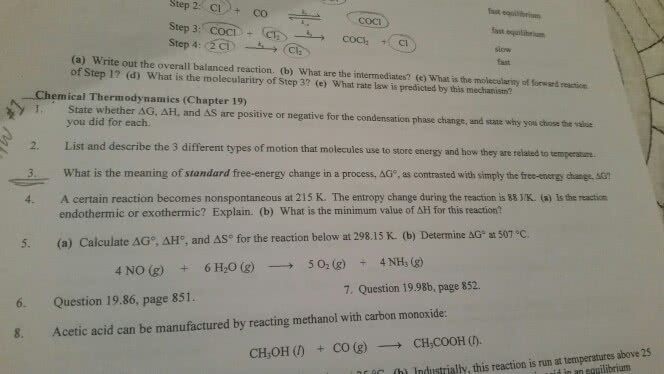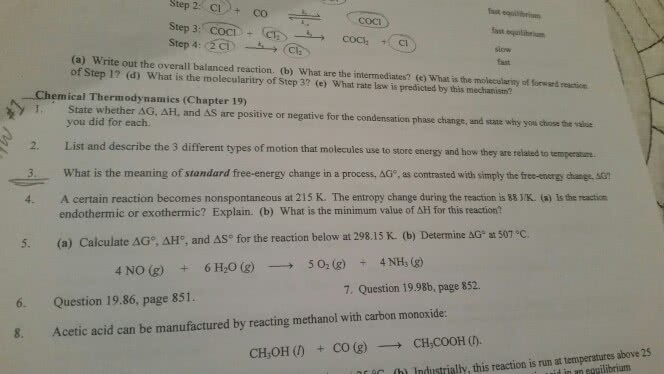CHEM 1B Chapter Notes - Chapter 19: Chemical Equation, Reversible Reaction, Spontaneous Process
Document Summary
Energy spreads out or disperse from a more concentrated to a less concentrated form. Second law of thermodynamics simply states that energy spreads out. Spontaneous process = one that occurs without ongoing outside intervention. Don"t confuse spontaneity with speed of a reaction. Rate of a process can increase due to catalyst but catalyst cannot make a process spontaneous. Nonspontaneous reaction can be made spontaneous by coupling with another spontaneous reaction. 19. 3 entropy and the second law of thermodynamics. Most spontaneous processes are exothermic, some spontaneous processes are endothermic. Macrostates and microstates: class lecture slides for permutations of microstates. The units of entropy: entropy is a measure of energy dispersal (joules) per unit temperature (kelvins) 19. 4 predicting entropy and entropy changes for chemical reactions. The entropy change associated with a change in state: entropy increases as it changes from solid to liquid or liquid to gas, gas has the most ways to distribute its energy therefore greater entropy.




